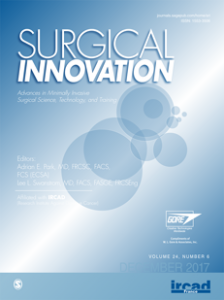Muls V, Eckardt AJ, Marchese M, Bastens B, Buset M, Deviere J, Louis H, Rajan A, Daniel M, Costamagna G.
Surg Innov. 2013 Aug;20(4):321-30.
BACKGROUND:
To date, there are no long-term data on the use of transoral incisionless fundoplication (TIF) for the treatment of chronic gastroesophageal reflux disease (GERD). We sought to prospectively evaluate the long-term safety and durability of TIF in a multi-center setting.
METHODS:
A longitudinal per protocol (PP) and a modified intention-to-treat (mITT) analysis at 1 and 3 years consisted of symptom evaluation using the GERD health-related quality of life (GERD-HRQL) questionnaire, medication use, upper gastrointestinal endoscopy, and pH-metry.
RESULTS:
Of 79 patients previously reported at 1 year, 12 were lost to follow-up, and 1 died from an unrelated cause. The remaining 66 patients were followed up and analyzed (mITT). Of 66 patients, 12 underwent revisional procedures, leaving 54 patients for PP analysis at a median of 3.1 years (range = 2.9-3.6). No adverse events related to TIF were reported at 2- or 3-year follow-up. On PP analysis, median GERD-HRQL score off proton pump inhibitors (PPIs) improved significantly to 4 (range 0-32) from both off (25 [13-38], P < .0001) and on (9 [0-22], P < .0001) PPIs. Discontinuation of daily PPIs was sustained in 61% (mITT) and 74% (PP) of patients. Of 11 patients with pH data at 3 years (PP), 9 (82%) remained normal. Based on mITT analysis, 9/23 (39%) remained normal at 3 years.
CONCLUSIONS:
The clinical outcomes at 3 years following TIF, patient satisfaction, healing of erosive esophagitis, and cessation of PPI medication support long-term safety and durability of the TIF procedure for those with initial treatment success. Although complete normalization of pH studies occurred in a minority of patients, successful cases showed long-term durability.
Link to abstract on PubMed: Muls V,et al; Surg Innov. 2013 Aug;20(4):321-30.


